Best practices to optimize checkout process
- Minimize the number of steps
- Incorporate clear and helpful error messages
- Offer a guest checkout option
- Use exit intent popups
- Show a checkout progress bar
- Customize the checkout process
- Enhance the mobile checkout experience
- Allow multiple payment methods
- Prioritize security and privacy measures
- Remove additional costs
- Offer live chat support
- Communicate after the purchase is complete
Imagine this scenario: Someone comes to your online store, spends a few minutes browsing your website, and finds a couple of products they love. They add those items to their cart, head to the checkout page, and then…POOF! They disappear.
It happens more often than not. In fact, according to a number of studies, the average cart abandonment rate for the e-commerce industry is a whopping 70.2 percent.
Why do prospects add items to a shopping cart and then decide not to complete the purchase? There are lots of reasons, and they include anything from a too-difficult checkout process to surprisingly high shipping or delivery costs to a simple change in the buyer’s mindset.
And since changing our minds is part of human nature, you’ll never eliminate cart abandonment entirely. However, there are things you can do to reduce it.
One way to decrease cart abandonment — and increase sales — is to optimize the checkout process. Doing so will help you eliminate many of the barriers to buying, making it easier for prospects to become paying customers.
What e-commerce checkout is and why optimization matters
E-commerce checkout is the process customers go through whenever they make a purchase from an online store.
The process itself varies from store to store. In general, it involves adding items to an online cart, going to a checkout page, entering payment details, selecting shipping preferences, and clicking a “buy” button to complete the sale. This process can be simple — or it can be long and complex, frustrating prospects and discouraging them from completing their purchases.
It’s important to periodically evaluate your e-commerce checkout process and make sure it’s as smooth and simple as possible. Removing obstacles to making a purchase can decrease cart abandonment rates, increase the overall value of individuals’ carts, and increase your overall revenue.
There are many ways to optimize the e-commerce checkout process, such as by minimizing the number of steps involved or providing financial incentives for completing the purchase.
How to optimize the checkout process: Best practices
Here are some strategies to try in your online store.
1. Minimize the number of steps
A good starting point for checkout process optimization is to look at the number of steps involved. “Streamline the process by minimizing the number of steps and fields, focusing only on essential information, which speeds up transactions and reduces user frustration,” says Jake Bullock, SEO specialist at First Page Prodigy LLC, an online marketing agency.
When you remove unnecessary steps from the process, you get your prospects closer to completing the sale. For example, don’t request information that isn’t necessary to the purchase, such as a job title or telephone number.
2. Incorporate clear and helpful error messages
Sometimes things go wrong. The occasional error message won’t discourage online shoppers if it’s actually helpful and easy to understand.
When an issue occurs during the checkout process — such as when a prospect forgets to fill out a mandatory form field — ensure the error message points them to where they can make the correction. If the error message is vague, the prospect may get frustrated and abandon the purchase altogether.
3. Offer a guest checkout option
Many online retailers require prospects to create an account and sign in before they can make a purchase, but this can be a major barrier for people who don’t want to go through the hassle of dealing with login credentials or sharing unnecessary information online.
Abhi Madan, cofounder and creative director of Amarra, an online designer gown boutique, implemented this strategy and found it works: “Not every customer wants to commit to creating an account. Offering a guest checkout option has significantly increased our conversion rates, as it lowers the barrier to completing a purchase.”
4. Use exit intent popups
An exit intent popup is a message that displays automatically when a user moves their cursor off the webpage or is about to close the browser, indicating their intent to leave. Done right, popups can prevent that from happening.
Your popup should contain urgent and exciting information designed to convince the user to stay and complete the purchasing process, such as a limited-time discount. Some exit intent popups collect information, such as the user’s email address, with the promise of sending more engaging offers their way.
5. Show a checkout progress bar
Transparency is important when building trust with new customers. A checkout progress bar gives buyers a clear indication of what’s involved in your checkout process by showing them the steps involved, such as collecting address information and then payment information. As the buyer completes each step, the progress bar moves forward accordingly. Being able to see that the purchase is nearly complete can keep a buyer going.
It’s also best to keep the checkout page free of other distractions so the prospect can focus on filling out the necessary details. “Maintain a clean and focused checkout page design by removing extraneous elements like headers, footers, and additional product suggestions,” says Collin J. Stockton GTM at Prodport, a tool for optimizing the customer journey.
6. Customize the checkout process to appeal to your audience
Hopefully you’ve researched your buyers and you know what appeals to them — as well as why they’re attracted to your product or service. Use that information to tailor your checkout page in ways they’d appreciate.
For example, if your target audience is motivated by social proof, specify how many other customers have purchased the product recently (e.g., “36 people bought this in the last hour!”). Or if you know your product is a popular gift item, include options for gift wrapping and personalized messages.
7. Enhance the mobile checkout experience
More than three-quarters of online shopping traffic takes place on mobile devices. That presents a huge opportunity for you if you can capitalize on it! However, not all online stores are optimized for mobile use, which can create a frustrating and discouraging experience for prospects who are looking to complete a purchase on a mobile device.
Madan says a large percentage of online shopping at his boutique happens on mobile devices: “We ensure our checkout process is just as seamless on mobile as it is on a desktop. This includes responsive design elements, larger form fields for easy tapping, and a clear call to action.”
8. Allow multiple payment methods
Online customers want a variety of payment methods to choose from. Some prefer credit cards, others like PayPal, some want Venmo. If a buyer doesn’t immediately see their preferred payment method, they’re more likely to abandon their shopping cart.
“Provide multiple payment options to accommodate diverse customer preferences, prioritizing popular methods while expanding choices as your business grows,” advises Stockton. This way, you encourage customer satisfaction while removing barriers for prospects.
9. Prioritize and communicate security and privacy measures
Customers are concerned about online security. According to one study, 25 percent of shoppers have exited the checkout process simply because they didn’t trust the site would protect their credit card information.
If your online business has security measures in place, such as SSL encryption, it’s important to tell your customers about them up front. Displaying trust signals like security badges reassures customers about the safety of their data and encourages transactions, says Bullock.
10. Remove additional costs
Sometimes, seeing tax and shipping added to the cost of a purchase brings on sticker shock, causing customers to abandon ship. If possible, try to absorb any additional costs for the customer. For example, can you offer free shipping or delivery for certain products or purchases?
It’s also important to have full transparency about all the costs involved. “Disclosing all costs, including shipping, taxes, and any additional fees up front has helped us build trust with our customers,” says Madan. “Transparency has been key in retaining customers through the payment process.”
11. Offer live chat support
If a prospect has a question during the checkout process, who can they turn to without having to leave the page? Live chat support is a great way to provide answers to common questions people have while checking out.
You can use an artificial intelligence chatbot to support this service and offer a human customer support person to field more complex queries. This way, your prospects don’t have to abandon their carts if they can’t figure something out on their own.
12. Communicate after the purchase is complete
Don’t stop communicating with customers once they’ve completed their purchase. If you want people to return time and time again, you have to focus on post-purchase communication.
“A streamlined post-purchase communication system reassures customers that their order is being processed,” says Madan. “We provide immediate confirmation emails and offer easy access to customer support, which ensures confidence in our brand and often leads to repeat business.”
How Jotform can help you optimize the checkout process
We have one final tip for optimizing your e-commerce checkout process: Try Jotform! Thousands of online stores use our online form builder to streamline checkout, reduce cart abandonment, increase cart value, and raise revenue.
Jotform offers customizable forms and integrations to create an efficient and user-friendly checkout experience. Our checkout forms encourage completion because they allow online retailers to display or hide form fields based on shoppers’ previous inputs, reducing the complexity of the checkout process. One example of this is only showing a gift message field if the user has indicated the purchase is a gift.
Jotform also makes online payments easy through direct integrations with a wide range of payment processors like PayPal, Stripe, Square, and more. That means you can offer your customers a variety of payment choices. Accepting payments from customers has never been simpler!
And there are other ways you can use Jotform to enhance your checkout process:
- Follow up with customers who have abandoned carts with one of our follow-up surveys.
- Send post-purchase surveys to gather feedback on the shopping experience.
- Send thank-you emails to customers with autoresponder emails.
And if you’re looking for a way to build your own online store from scratch, Jotform’s Online Store Builder is a great option. You can choose one of Jotform’s online store templates to give you a head start. Then share your storefront with a link or embed it directly into your existing website. From order forms to payment processing and beyond, Jotform is here to help you optimize the online checkout process at every step.
Photo by Kritsada Seekham









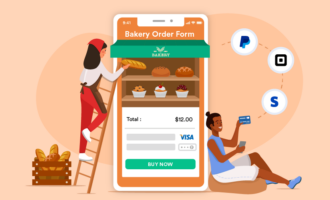

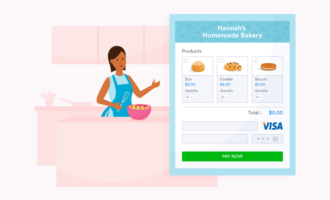
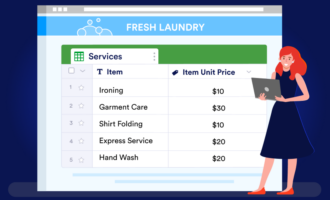

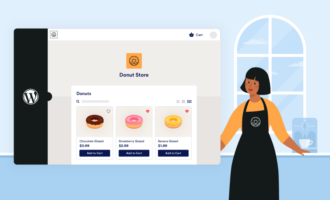










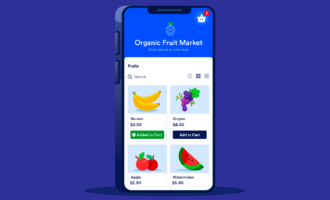

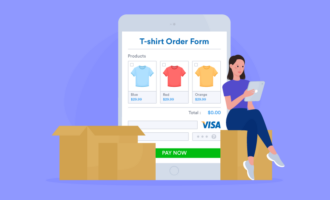










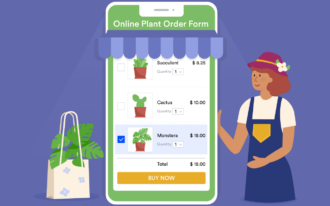
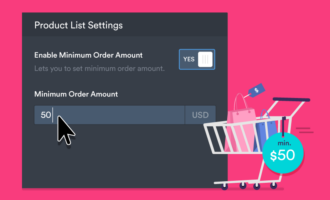





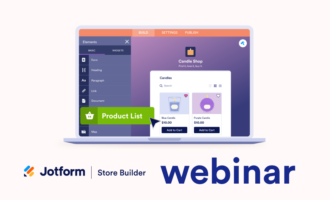

Send Comment: